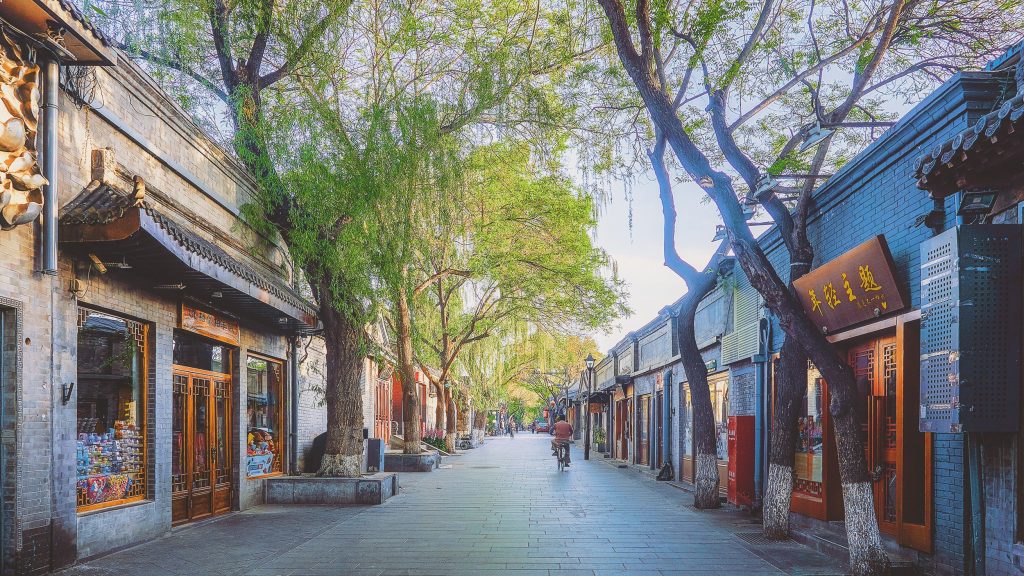Why Travel with Discover Beijing Tours

Unique Experiences
Enjoy a premium trip that goes beyond the typical tourist attractions.

Well-Selected Local Guides
Knowledgeable, enthusiastic, and attentive — your personal local guides will share interesting stories, insider information, and even create unexpected highlights!

Your Booking is Risk-Free
Cancel up to 24 hours before the travel date in advance for a full refund
Popular Beijing Tours
Start from 202USD P/PPrivate Beijing Layover Tour: Mutianyu Great Wall and Forbidden City with Cable Car and Meal
Start from 128USD P/P4-Hour Private Illuminated Beijing Tour with Authentic Chinese Dinner on Hutong Street
Hutong
History & Background
A hutong is a lane or alley formed by traditional courtyard compounds lining both sides. These Hutongs range from little alleys 40 centimeters wide to streets 10 meters wideform a neighborhood of wonderful passageways that provide a window into an old, traditional China.
Beijing Hutongs have a history of more than 700 years. The Hutong first appeared in the Yuan Dynasty (1271–1368).The word Hutong originates from the Mongolian word which means ‘water well’. Most of the Hutongs still in existence today date from the Ming (1368 – 1644) and Qing (1644 – 1911) dynasties. It is said that by 1949 there were 3,250 Hutongs. But later with the city’s construction, large number of Hutongs has destroyed dramatically. In 2003, only 1,500 were left, and now about 1,000 remain. Today lots of the existing Hutongs have been transformed into tourist attractions associated with street food, shopping, and bars.
Beijing’s hutongs showcase the traditional daily life of ordinary people in Beijing and give a glimpse of old Beijing. The narrow and compact hutongs stimulate deep and warm relationships among neighbors. The people meet, chat, eat, and play games such as mahjong in the lanes and public spaces.
Must-See Hutongs in Beijing
Nanluoguxiang Hutong(南锣鼓巷胡同)
Nanluoguxiang is the most popular and one of the oldest Hutongs in Beijing with a history of more than 740 years. Nowadays, Nanluoguxiang has become a combination of traditional Beijing Hutong and refurbished pedestrian street. Selling all kinds of souvenirs and traditional Chinese handcrafts such as Chinese folding fan, silk scarf, clay figures, Beijing Opera facial masks etc.
Yandaixie Street(烟袋斜街)
Yandaixie Street, literally meaning “Skewed Tobacco Pouch Street”, is a 232-meter-long street distinctive architecture, traditional Chinese shops, and vibrant atmosphere. The street is the oldest business street in Beijing with a history of about 800 years. The street got its name due to its shape which like a huge tobacco pouch.
Confucius and Imperial College Area (北京孔庙国子监)
The Temple of Confucius, built in 1302, are located along this street with Imperial College. and Lama Temple. Now, you can find many interesting antique stores, tea houses and traditional shops along the street.
Liulichang Street(琉璃厂古文化街)
The 750 meter long Liulichang Culture Street have all kinds of Calligraphy, art, antiques and paintings.
Shijia Hutong and Hutomg Museum (史家胡同和胡同博物馆)
Shijia Hutong Museum located at No. 24 of Shijia Hutong, it is Beijing’s first Hutong museum. Officially opened to the public in October 2013, it have seven permanent exhibition halls, one temporary exhibition hall and one multi-functional hall which showcase the history, culture and Hutong life of old Beijing.





